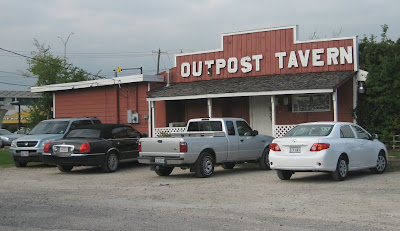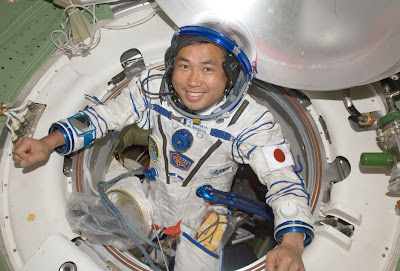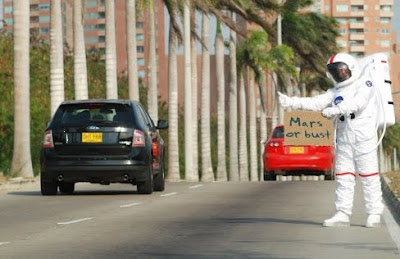After viewing the SVMF from above, we went to take a closer look at the FFT, the CCTs, the SSMTF, the PABF and the APDS. And if you understood even one of those, definitely go to nasajobs.nasa.gov and apply =)
But if you’re anything like me, your brain maxed out on acronyms around age 30, so I’ll start again. Here we are in NASA’s Space Vehicle Mockup Facility! This giant hangar at Johnson Space Center in Houston is home to all the simulators and software/hardware exercises that support both engineering endeavors and astronaut training.

Science Crew Operations & Utility Testbed (SCOUT) Vehicle
Highlights included various docking trainers, an interesting new "crawler" and “Six Degrees of Freedom” in the Robot Operation Area, the Hubble telescope mockup and a close-up view of CanadArm. Among the many structures in the Space Station Mockup and Training Facility (SSMTF), we also had an opportunity to examine the Payload Development Labs (PDL I and II) in the US Logistics Modules. I looked around the tight spaces, wondering, what would it be like to float around in here? Running actual experiments!
An engineering native who sounded like he’d lived in the simulators since about the Gemini era described all the surrounding equipment, and told us funny stories about past antics in procedural simulations – including one episode where a team substituted actual launch footage for a mock countdown, momentarily tricking flight director Gene Kranz into thinking a rocket truly took off during a simple exercise! Good stuff.

My brother Vince in an ISS simulator
Ever the IT geek, I gawked at the laptops and controls while our hosts produced an actual ISS checklist, and had my brother (Aeronautical Engineer) run through a button-pushing, flip-switching simulation on the HRF GASMAP, a piece of medical equipment used to measure oxygen and carbon dioxide levels in blood, and how those levels change over time in space.
We also got our first quality view of Constellation hardware, which was very exciting! The Orion Crew Module mockup is helping to answer questions that computer designs, blueprints and drawings alone cannot... for the largest “capsule” yet built. It’s definitely much larger than Apollo capsules, as it’s meant to house crews of four to six astronauts.

Orion Crew Module (OCM)
Launched by future Ares rockets, Orion Crew Exploration Vehicles will eventually transfer crews to and from the ISS and the moon.
On the other end of the size spectrum was the Soyuz TMA capsule, a mockup of the Russian hardware that currently ferry crews launched from Baikonur Cosmodrome to the ISS and also serve as a lifeboat escape vehicle for the ISS when docked. The Soyuz, a mainstay of the Russian human space program for many years, can carry three cosmonauts... and will be what US astronauts rely upon when the Shuttle is retired in coming years.
Check out the photo gallery of our adventures, and thank you Jim, for the great opportunity to run through a sim checklist, we had a blast!



















































































